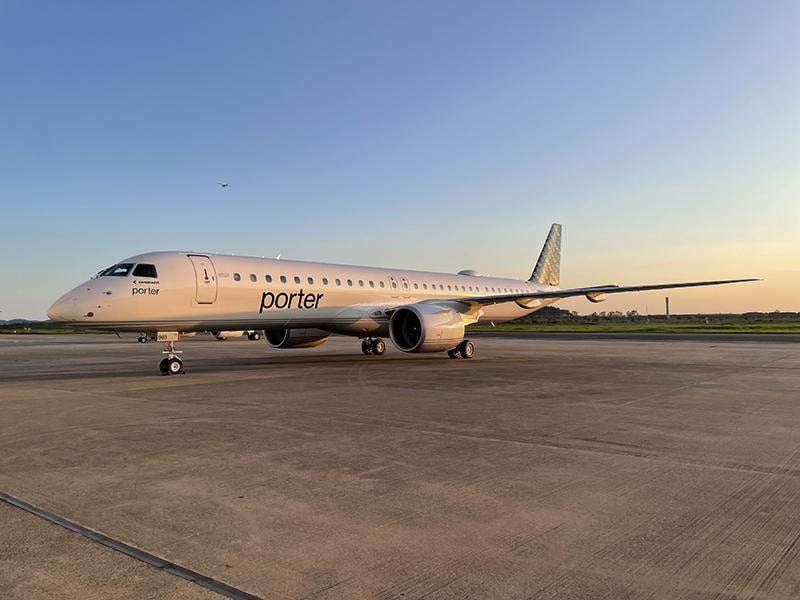
The relevance of the "small narrowbody," or crossover, category of airliners is increasing, according to Embraer.
Presenting its 20-year market outlook at last week’s Farnborough Airshow, the Brazilian manufacturer noted the virtues of the up-to-150-seat category.
“Larger aircraft are not always economically or operationally optimal for medium- and lower-density markets, particularly when multiple daily frequencies are essential for those cities to stay well connected,” the company says. “Fleets with these [larger] aircraft benefit when complemented by smaller narrowbodies in the sub-150-seat segment.”
The smaller types, namely the Embraer E-Jet and Airbus A220 portfolios, “go where bigger jets cannot, do so more frequently and usually more profitably.
“As the average aircraft size in key world regions increases, a reflection of the strong orderbook for 200-seat narrowbodies, it becomes clear that a mixed fleet of small and large narrowbodies is the best way to serve the diverse characteristics of an airline network.”
This is evident in several carriers, with both Royal Jordanian and Omani LCC SalamAir, for example, buying Embraers to complement their A320-family fleets.
“A mix fleet of sub-150-seat jets and larger narrowbodies will be the successful fleet strategy for the next 20 years,” says Embraer Commercial Aviation President and CEO Arjan Meijer.
Embraer’s forecast predicts global demand for 10,500 jets and turboprops in the under-150 seat category over the next 20 years. Of that total, the great majority—8,470—will be jets, compared to 2,030 turboprops.
North America, followed by Asia Pacific and Europe, will lead jet deliveries, the forecast predicts.
“Carriers are adding capacity in big markets, yet smaller cities still need to stay well connected to airline networks with high-frequency air service,” Meijer says. “We believe aircraft in the sub-150-seat category are the most efficient and cost-effective to address that need.”
Crossover jet deliveries over the next 20 years are forecast to be broken down by region like this:
2,610 North America (30.8%)
2,260 China & Asia-Pacific (26.7%)
2,110 Europe & CIS (24.9%)
770 Latin America (9.1%)
380 Africa (4.5%)
340 Middle East (4%)
The forecast illustrates the strong continuing demand for crossover jets from North America, where they form the backbone of the feeder airlines serving the major carriers. They are also making an impact with independent carriers such as JetBlue, Breeze Airways and Porter Airlines.
Unsurprisingly, the sheer scale of the China and Asia-Pacific market means that it runs North America a close second, while Europe has always been a popular destination for crossover jets, particularly on routes linking secondary cities.
At the other end of the scale, the relatively small number of crossover jets predicted to be bought by Middle East and North African carriers over the next 20 years shows that the region’s carriers will continue to favor larger types, with Airbus and Embraer continuing to face an uphill fight to gain traction for their smaller products in this market.





